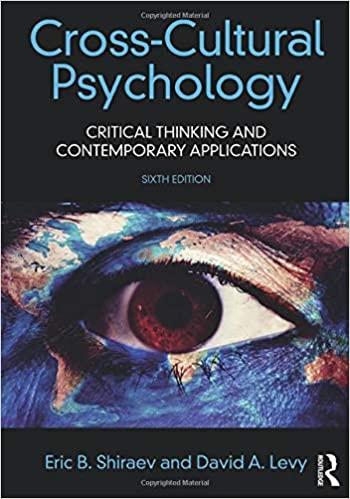Question
Jeremy has been increasingly difficult to manage since nursery school. At school, he teases and kicks other children, trips them, and calls them names. He
Jeremy has been increasingly difficult to manage since nursery school. At school, he teases and kicks other children, trips them, and calls them names. He is described as bad tempered and irritable, though at times he seems to enjoy school. Often he appears to be deliberately trying to annoy other children, though he always claims that others have started the arguments. He does not get in serious fights but does occasionally exchange a few blows with another child.
Jeremy sometimes refuses to do what his two teachers tell him to do, and this year he has been particularly difficult during arithmetic, art, and science lessons. He gives many reasons why he should not have to do his work and argues when told to do it. At home, Jeremy's behavior varies. Some days he is defiant and rude to his mother, needing to be told to do everything several times, though he usually complies eventually. Other days he is charming and volunteers to help, but his unhelpful days predominate. His mother says, "The least little thing upsets him, and then he shouts and screams." Jeremy is described as spiteful and mean with his younger brother, Rickie. His mother also says that he tells many minor lies, though when pressed he is truthful about important things. (Source: DSM Casebook: A Learning Companion to the Diagnostic and Statistical Manual of Mental Disorders, Fifth Edition. American Psychiatric Association, 2013.)
- Compose three open questions you would want to ask Jeremy and his mother during your assessment that will invite them to expand upon their perspective of the presenting problem. Consider ways to phrase questions that will help you assess the biological and social risk factors for conduct and oppositional defiant disorders. Provide a brief rationale for each question.
- Identify a potential diagnosis for Jeremy including the psychosocial and environmental problems (V and Z codes) that would be important to provide a holistic description of the context of the focus of treatment.
- Include any information you learned from using the Differential Diagnosis tool.
Step by Step Solution
There are 3 Steps involved in it
Step: 1

Get Instant Access to Expert-Tailored Solutions
See step-by-step solutions with expert insights and AI powered tools for academic success
Step: 2

Step: 3

Ace Your Homework with AI
Get the answers you need in no time with our AI-driven, step-by-step assistance
Get Started


